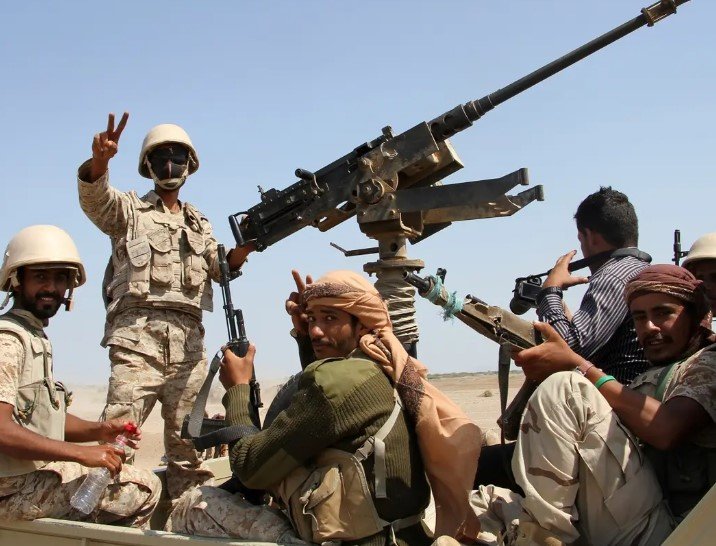Renewed Violence in Saada Stokes Fears of Prolonged Conflict and Regional Stalemate
A fresh round of artillery fire by Saudi forces struck Yemen’s northern Saada province on Monday, killing one civilian and injuring another. The renewed cross-border attacks are not only reigniting an old flashpoint in a grinding war but also unraveling fragile hopes of de-escalation between Saudi Arabia and the Houthi rebels after years of bloodshed.
The strikes hit Al Thabit in Qatabir and parts of Baqim district, both areas long seen as soft targets near the mountainous border that separates Yemen’s war-weary north from the Saudi kingdom. Though the frequency of such attacks has ebbed in recent months, Monday’s shelling is a blunt reminder that peace still hangs by a thread.
The Border That Never Really Slept
Saada has been a battlefield since the early days of the Houthi insurgency, and despite moments of political detente, it never truly fell silent.
Saudi-led coalition forces have repeatedly pounded the province under the banner of countering Houthi advances. This time, the strikes—according to Yemen-based monitors—weren’t in response to a major provocation.
No incoming attacks were recorded from the Houthi side at the time.
The latest flare-up comes just weeks after backchannel talks between Saudi and Houthi intermediaries showed signs of movement. But this shelling risks derailing that quiet progress.

Death, Ruin and Routine in the Mountains
The local damage goes far beyond numbers.
In Al Thabit and Baqim, homes were hit. Families who had just returned after months of displacement are once again packing up. A father died. His neighbor lost a leg.
Some residents reported hearing shelling before dawn. Others said it came in waves, stopping briefly, only to return as children screamed from inside cinderblock homes.
These attacks aren’t isolated accidents or military errors. They’ve become part of the rhythm of life here.
• Over 1,100 civilians were killed or injured in Saudi border attacks in 2024, according to humanitarian reports.
Saada’s civilians have become collateral to a war that feels endlessly recycled.
Laws on Paper, Blood on the Ground
The repeated shelling of civilian neighborhoods raises troubling questions about Saudi Arabia’s commitment to international humanitarian law.
The rules of war—long enshrined in the Geneva Conventions—are pretty clear on this:
-
You distinguish between civilians and combatants.
-
You don’t bomb homes unless there’s a clear military objective.
-
You take precautions to limit harm.
And yet, Al Thabit wasn’t a military base. It wasn’t a missile launch site. It was a cluster of homes and farmland.
International monitors have warned that continued strikes like these may amount to violations of both IHL and the principle of proportionality. The victims were not on any battlefield. They were farming, sleeping, surviving.
A single paragraph here says everything:
One man was killed, and he wasn’t holding a weapon.
Truce in Name, Attacks in Practice
What’s perhaps most galling to rights groups and aid workers is that these latest attacks occurred during a period of supposed restraint.
While no formal nationwide ceasefire is in place, both Riyadh and the Houthis have engaged in unofficial de-escalation efforts, particularly after Oman facilitated secret talks in April.
So when artillery shells hit Baqim while no hostilities were reported from the other side, it sends a message.
For Yemenis watching from the ground, it says: “Nothing has changed.”
One health worker at a local clinic said the patients keep coming with similar wounds—shrapnel to the stomach, collapsed lungs, shattered ribs. “We don’t ask who did it anymore,” he said. “We just count who we lost.”
Dust, Debris, and the Displacement Spiral
The humanitarian cost of these attacks keeps stacking.
Already, Saada hosts tens of thousands of displaced people from earlier strikes. With each new shell, more join that caravan of the uprooted.
Schools that reopened after Ramadan are empty again. Markets are shut. Clinics are overwhelmed. Aid trucks are slowing at border crossings, fearing further attacks.
A breakdown of impact in the province looks like this:
| Sector | Current Status | Notes |
|---|---|---|
| Healthcare | Severely limited | 3 major clinics damaged since April |
| Housing | Widespread damage | 60+ homes reported damaged in June alone |
| Education | Disrupted | 27 schools closed temporarily in Saada |
| Water Access | Intermittent | Strikes damaged two pumping stations |
| Food Distribution | Inconsistent | Aid convoys delayed by security concerns |
Even before this round of attacks, the UN listed Saada as one of the most critically affected provinces in Yemen, with 76% of its population needing humanitarian assistance.
Now, the fear is that things might get even worse.
Why Saada, and Why Now?
Strategically, the Saudi-led coalition views Saada as the nerve center of the Houthi command. It’s the birthplace of the rebel movement and still hosts senior leadership. But that logic also brings with it a dangerous assumption: that every village nearby could be hiding militants.
Military analysts suggest the June 30 strikes may have been intended as pre-emptive pressure, a response to satellite signals or intercepted chatter about Houthi logistics movements. But even if the intent was tactical, the execution remains murky—and brutal.
There’s another layer here too: domestic pressure.
With Crown Prince Mohammed bin Salman keen to avoid being seen as weak amid other Middle East conflicts, a show of military might—even a tragic one—sends a message to both foes and allies.
But it comes at a steep price for civilians.
One aid official in Sanaa said bluntly: “They want leverage in the next negotiation. But they’re buying it with blood.”
